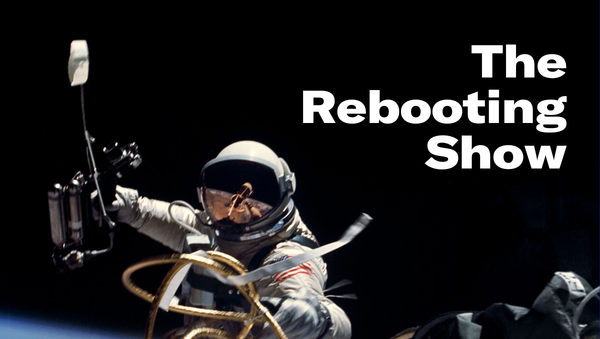Age of ambiguity
Get comfortable with the unclear

Level up your email strategy

Every quarter, we publish email engagement stats from Omeda clients into one report, so you can discover what will drive clicks, conversions and results from your audience. This quarter, we’re analyzing data from more than 1.8 billion emails sent through our platform during Q3 2023, focusing on open, click and click-through rates.
Here’s what you can expect:
- Overall email engagement metrics
- Performance by deployment type, including newsletters and promotional emails
- An update on Apple’s Link Tracking Protection
- Insider tips on how to protect your deliverability and maximize engagement
Age of ambiguity

Last week, I ran into one top exec at a leading publisher and asked their expectations for next year. After an audible exhale, I was told revenue could be up 20% or down 20% and neither result would be surprising. One theme that keeps coming up in The Rebooting Dinner Series is how up and down the pandemic and post-pandemic periods have been. There’s a craving for stability, but that might not be realistic.
From the effect of generative AI to the final disappearance of the third-party cookie, an ambiguous environment is the norm. One publishing executive a few weeks back lamented how the playbooks they’d use in the past don’t apply now.
Humans naturally gravitate toward black-and-white answers to complexity. On its face, performance marketing is about mathematical rigor to the smoke-and-mirrors approach to branding. You put a dollar in, get $1.50 out. But how people make decisions is ambiguous. At one dinner last week, a brand side marketer advised news publishers that they must improve their attribution in order to get more ad dollars. Of course, later this exec added that they avoid news altogether because it’s too divisive.
Research has long shown that brand advertising is an investment in future growth. A curiosity is how Google, Apple and other tech companies put money into hard-to-measure media like billboards and other big brand activations impossible to tie to sales. The newfound focus on attention is one attempt to come up with some kind of measurement that is not the click, the original sin of internet advertising that’s haunted publishers since HotWired promised people would click banner ads. That set up the misaligned incentives that has caused the cottage industry of made-for-advertising sites. In the infinite void of digital advertising, the click is a short cut, since there’s no prayer of knowing where your ads are appearing.
Career paths have never been more ambiguous. Empowered labor unions are a symptom of that, although I have doubts they will bring the kind of stability many workers want. Many publishers are embracing services models, which are inherently unstable. The more-with-less era will result in more flexible models that are responsive to an ambiguous environment marked by what the financial analysts call “a lack of visibility.”
The independent path sometimes isn’t a choice. I’ve noticed a large group of middle-aged execs who once enjoyed stable perches in major roles who are now consultants, piecing together an independent path in those in-between years for media executives still in what should be their prime earning years. I’m now two years past the reassurance of a regular paycheck. Adapting to income ambiguity is a feature, not a bug, of the independent path. Life is a series of tradeoffs.
We are a technological species but also a narrative species. Stories have winners and losers and narrative arcs. That’s a flaw at the heart of autopsy stories, which seek to go back in time and trace mistakes made along the way. Post-WeWork, these stories tend to focus on excessive spending and dubious decisionmaking in retrospect. Cameo is on the receiving end of a classic of this genre. It even has the de rigeur anecdotal lede of the lavish party and billboard graf promising the story is based on 30 interviews and “internal documents, screenshots and photographs.” You’re in trouble when that graf mentions internal documents.
But wait a second, as investor Joe Marchese noted, throwing fancy parties is a typical marketing cost for a companies like Cameo that focuses on celebrities. Of course, there will be many more of these stories to be written in the hangover from the ZIRP era. (Hopin was once valued at $5.65 billion. 2021 feels very far away.) Few of the unicorns of that era were as valuable in a high-rate environment, but that doesn’t mean they’re all failures. They were just priced in a different environment.
These days, many of the issues we face are complex and therefore resistant to neat divisions. But again and again, we are expected to take sides and leave aside any semblance of nuance. VC philosopher Marc Andreessen’s latest essay is of this genre. It seeks to push past needed discussions of AI ethics and the overall role the private tech sector plays in shaping the future direction of societies. Instead, you’re either an optimist or a pessimist. This is marketing masquerading as thinking. Anyone who only talks upsides is delusional or selling you something.
At least Andreessen has retreated to tech vs social commentary. We might be thankfully entering the end phase of B2B SaaS VCs playing geopolitical strategists on podcasts. That time-for-some-game-theory energy is better spent on portfolio triage. Ask the Web Summit guy. Sometimes staying in your lane is the right choice; the right to free speech doesn’t mean you’re compelled to hold forth on every issue.
The coming “tsunami of bullshit” will test news publishers. Digital media is part of the “information space,” as different sides look to shape public opinion with neat narratives that reinforce pre-existing beliefs. The New York Times’ apparent screwup with prematurely assigning blame on Israel for the explosion at the Gaza hospital is part of that stew. Ben Smith is right that what’s most needed is patience, since the Twitter/X sleuths will be jumping to conclusions. The way for “mainstream media” to stand out, and to compete, in the information space is to avoid the kneejerk reactions.
That will require putting aside stuffy conventions of the profession that often cause ambiguous situations to be presented as cut and dry.

Upgrade your video strategy
Finding the right online video platform is a cornerstone to scaling your video revenue-driven business. Whether you’re looking to launch a video program from scratch or refine and scale an existing one, this guide from Ex.co will help you identify the foundational elements you need to supercharge revenue growth and ensure the success of your business in the fourth quarter and beyond. Get the guide.
Thanks for reading. Send me a note with your feedback by hitting reply.




